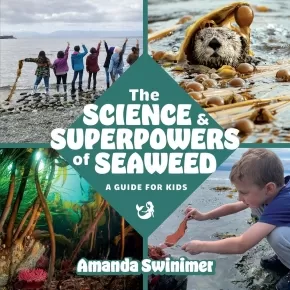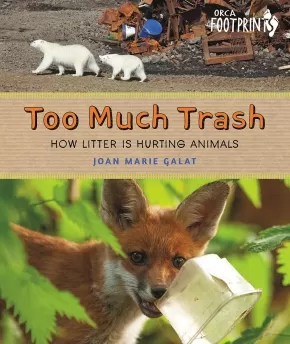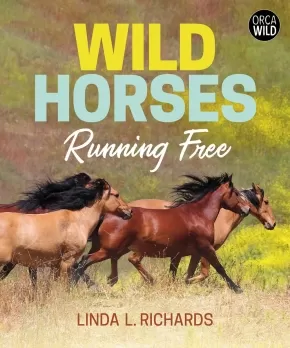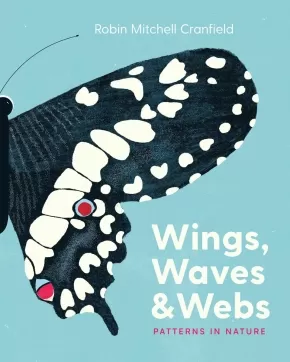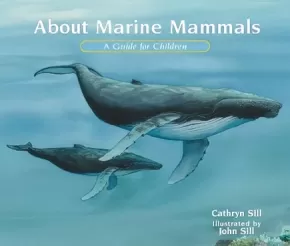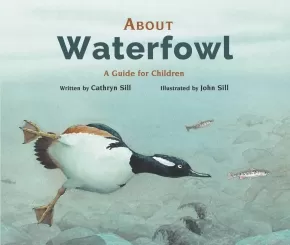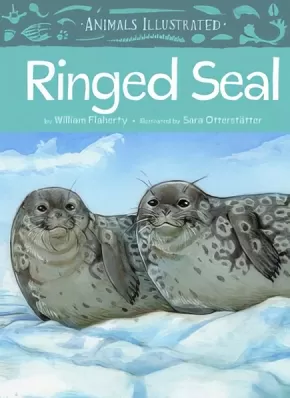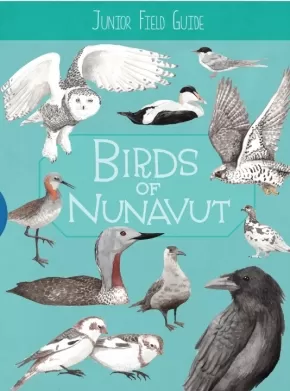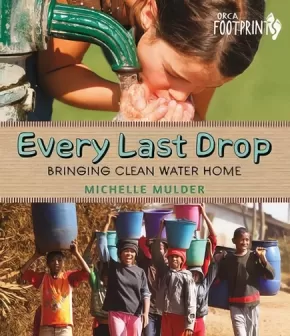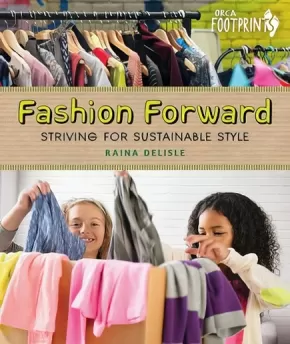
Science and Technology
76
-
90
of
428 Results;
Sort By
Go To
of 29
The Science and Superpowers of Seaweed: A Guide for Kids
$24.95
Format:
Paperback
ISBN / Barcode: 9781990776199
Synopsis:
Synopsis:
A middle-grade and family-friendly introduction to the enchanting world of seaweed.
Young readers will be delighted to learn about the wonderful, watery world of seaweed, where emerald-green kelp forests grow as tall as trees and rainbow seaweeds shimmer like gemstones in the sunlight. Seaweed can be fun too, providing tasty snacks like nori crisps and cool things to do: hunt for dead man’s fingers to squeeze like a squirt gun, have a popping contest with rockweed or make seaweed art. Seaweeds are also critical to the health of the planet—they produce most of the oxygen we need to breathe, help to keep the earth cool and provide habitat for sea creatures. And they're full of healthy vitamins and have more minerals than any other food!
This colourful, activity-packed book explores the science of seaweed while showing how to sustainably harvest and use it, and providing many fun facts about marine plants and animals. It is a unique field guide, featuring seaweeds from both Atlantic and Pacific oceans and showcasing the beautiful and vital ecosystems of the coasts, and is sure to inspire curious beachcombers of all ages.
Educator Information
Recommended for ages 6 to 12.
Additional Information
168 pages | 8.50" x 8.50" | Paperback
Too Much Trash: How Litter Is Hurting Animals
$21.95
Format:
Hardcover
ISBN / Barcode: 9781459831827
Synopsis:
Synopsis:
Litter is not only an eyesore but a serious threat to animals and their habitats. We can all work together to keep the planet healthy and clean.
Did you know that gum on the sidewalk is litter? Even a banana peel that is thrown in a ditch is litter. Trash poses a threat to animals everywhere, including pets, farm animals and wildlife. They can get injured or trapped in the litter and even eat garbage that makes them sick.
In Too Much Trash: How Litter Is Hurting Animals, we discover how garbage ends up everywhere—from city streets and the wilderness to farmland and the ocean. But there's good news: litter is a problem everyone can help prevent. Around the world, kids and adults are finding ways to take out the trash. Find out how you can help clean up the planet for all species.
Reviews
“Lively design layouts with discrete, digestible bits of text make the book accessible and inspiring. Showing how refuse harms humans and other animals, this work should move readers to act.” — Kirkus Reviews
Educator & Series Information
This book is part of the Orca Footprint series. Kids today inhabit a world full of complex—and often mystifying—environmental issues. Orca Footprints aim to help kids answer their questions about the state of the natural world with well-researched, simply-expressed information and powerful images. With topics such as food production, water, cycling and sustainable energy, these books will inspire kids to take action.
Recommended for ages 9-12.
Additional Information
48 pages | 8.00" x 9.50" | Hardcover
Wild Horses: Running Free
$24.95
Format:
Hardcover
Text Content Territories:
Indigenous;
ISBN / Barcode: 9781459825598
Synopsis:
Synopsis:
Wild horses are legendary, but today their very existence is under threat from a changing environment, politics and less protected spaces to roam free.
These animals live all over the world, including the iconic mustangs in North America—a symbol of freedom and the American West. Today what we thought we knew about the history of wild horses and where they came from is changing. What makes a horse wild? Where do they live and how did they end up there? What is the relationship between wild horses and Indigenous Peoples? How are governments and citizens working for or against them?
In this book, readers discover the history, biology and ecology of wild horses and the key role young people are playing in protecting wild horse populations to keep them running free for generations to come.
Educator & Series Information
Recommended for ages 9 to 12.
This book is part of the Orca Wild series that examines the intricacies of animals, ecosystems, humans and our relationships to each other.
Includes some Indigenous content.
Additional Information
96 pages | 7.50" x 9.00" | 50 Colour Photographs, 1 Index | Hardcover
Wings, Waves & Webs: Patterns in Nature
$22.95
Artists:
Format:
Hardcover
ISBN / Barcode: 9781771646765
Synopsis:
Synopsis:
A visually stunning introduction to patterns found in nature. Perfect for early STEM learning in preschool and kindergarten.
From the dots on a ladybug to the spiral on a snail, patterns in nature can be found anywhere. This simple and playful concept book introduces the littlest of readers to both math and nature while engaging their creative potential. By the end, kids will be able to identify:
- Spots and stripes
- Spirals and symmetry
- Waves and honeycombs
- And more
After learning about key patterns, the book's final page—a striking sunflower—will inspire kids to find patterns for themselves. Vibrant and immersive, Wings, Waves & Webs invites young children to discover the beauty of the world around them.
Educator Information
Recommended for ages 2 to 6.
Curriculum Connections: Patterning, Geometry, Nature, Art and Design
Additional Information
36 pages | 10.00" x 8.00" | Hardcover
About Marine Mammals: A Guide for Children
$7.99
Artists:
Format:
Paperback
ISBN / Barcode: 9781682632888
Synopsis:
Synopsis:
A thoughtful first glimpse into the world of marine mammals--from the small, playful sea otter to the gigantic blue whale.
With beautifully detailed illustrations, About Marine Mammals tells children what is essential for understanding and appreciating marine mammals. An afterword, which includes a glossary and recommended books and websites, provides further detail for children and their parents about a wide variety of marine mammals.
Former teacher Cathryn Sill and noted wildlife illustrator John Sill, use clear, informative text and illustrations to explain to children what marine mammals are, what they do, and how they live.
Educator & Series Information
Recommended for ages 3 to 7.
This book is a part of the About Habitats series.
Additional Information
48 pages | 10.00" x 8.50" | Paperback
About Waterfowl: A Guide for Children
$24.99
Artists:
Format:
Hardcover
ISBN / Barcode: 9781682632345
Synopsis:
Synopsis:
An informative and entertaining introduction for young children to the amazing birds that live near water in all types of habitats.
In this addition to the About… series, award-winning author Cathryn Sill uses simple, easy-to-understand language to teach children what waterfowl are, where they live, what they eat, and how they move.
John Sill’s detailed, full-color illustrations show the characteristics of different types of waterfowl—from the Trumpeter Swans of northwestern North America to the Bar-headed Geese of central Asia.
Young learners who may only be familiar with the ducklings and geese on local ponds and lakes will be delighted to discover the amazing variety of waterfowl in the world. A glossary and afterword provide further fascinating details about waterfowl that will inspire readers to learn more.
Educator & Series Information
Recommended for ages 3 to 7.
This book is a part of the About Habitats series.
Additional Information
48 pages | 10.00" x 8.50" | Hardcover
Animals Illustrated: Ringed Seal
$15.95
Artists:
Format:
Hardcover
Text Content Territories:
Indigenous Canadian; Inuit;
ISBN / Barcode: 9781772273700
Synopsis:
Synopsis:
Animals Illustrated mixes fun-filled animal facts suitable for the youngest of readers with intricately detailed illustrations to create a unique and beautiful collection of children’s non-fiction books about Arctic animals.
Each volume contains first-hand accounts from authors who live in the Arctic, along with interesting facts on the behaviours and biology of each animal. In this book, kids will learn what ringed seals eat, where they live, how they raise their babies, and other interesting facts, like how deep they can dive and how they are amazing diggers!
Educator & Series Information
This book is part of the non-fiction Animals Illustrated series, which mixes fun-filled animal facts suitable for the youngest of readers with intricately detailed illustrations to create a unique and beautiful collection of children’s non-fiction books on Arctic animals. Each volume contains firsthand accounts from authors who live in the Arctic, along with interesting facts on the behaviours and biology of each animal.
Recommended Ages: 6 to 8.
Available in French: Phoque annelé
Additional Information
28 pages | 6.50" x 9.00" | Hardcover
Arctic Animal Life Cycles: Mammals - Nunavummi Reading Series
$12.95
Artists:
Format:
Paperback
ISBN / Barcode: 9781774505724
Synopsis:
Synopsis:
Learn about food chains in the Arctic!
This book explores the concept of the food chain using Arctic plants and animals.
Educator & Series Information
Recommended for ages 6 to 8.
This book is part of the Nunavummi Reading Series, a Nunavut-developed series that supports literacy learning while teaching readers about the people, traditions, and environment of the Canadian Arctic. It is a Level 8-11 book in the series.
Nunavummi Reading Series books have also been officially levelled using the Fountas & Pinnell Text Level Gradient™ Levelling System. F&P Level of this book: N.
Additional Information
36 pages | 8.00" x 8.00" | Paperback
Better Connected: How Girls Are Using Social Media for Good
$24.95
Format:
Hardcover
Text Content Territories:
Indigenous;
ISBN / Barcode: 9781459828575
Synopsis:
“A fresh take on empowering young girls in our a new rapidly advancing technological age. Pushing the boundaries, the young girls in the book inspire the old generation and the new.” — The Source
Synopsis:
The online world has real dangers, but girls around the world are using social media to create positive change and practice good digital citizenship.
You've probably seen media stories about the ways girls interact online, with headlines like "Depression in Girls Linked to Higher Use of Social Media," or "Half of Girls Are Bullied on Social Media." Better Connected focuses on the less-recognized and positive aspects of the online experiences of girls. From environmental activism to gun control, immigration policy to education access, girls are leading the way. They're showing up, teaming up and speaking up. With profiles of real changemakers and practical tools for getting started, Better Connected is an inspiring look at the amazing things girls can accomplish online.
Reviews
“Will provide [readers] with inspiration and resources...Adult readers, both teacher and parents, who are sometimes dismissive of, or dismayed by, the amount of time their students or children are spending on social media, can learn about the positive aspects of those online experiences. Recommended.” — CM: Canadian Review of Materials
“Both a history of social media and a guide to using it in a positive way…The usefulness of the information, and the breadth of support it offers for additional purposes, more than justifies its place on library shelves. Recommended” — School Library Connection
“The Kyi's have found ways to bring girls' voices and actions to the forefront as change-makers...Perfect for those who are exploring social media for the first time...Illustrations and layout designs from queer-Mestizx/Latinx artist Vivian Rosas bring the content to life.” —Canadian Children's Book News
“A fresh take on empowering young girls in our a new rapidly advancing technological age. Pushing the boundaries, the young girls in the book inspire the old generation and the new.” — The Source
Educator & Series Information
Recommended for ages 9 to 12.
This book is part of the Orca Think series.
Contains some, but limited, Indigenous content.
Additional Information
102 pages | 7.00" x 9.00" | Hardcover
Birds of Nunavut
$14.95
Artists:
Format:
Paperback
Text Content Territories:
Indigenous Canadian; Inuit;
ISBN / Barcode: 9781774505625
Synopsis:
Synopsis:
There are a lot of different types of birds living in Nunavut. From snowy owls to rock ptarmigans, learn all about what each bird looks like, how they live, what they eat, their migration patterns, and more. This science book combines colourful illustrations and photographs in a handy field guide filled with interesting facts about birds.
Educator & Series Information
Recommended for ages 8 to 10.
This book is part of the Junior Field Guide series. Perfect for learning all about living things in the Arctic! These Junior Field Guides give information and interesting facts about the different animals that live in Nunavut.
Additional Information
32 pages | 7.50" x 10.00" | Paperback
Braiding Sweetgrass for Young Adults: Indigenous Wisdom, Scientific Knowledge, and the Teachings of Plants
$27.50
Artists:
Format:
Paperback
Text Content Territories:
Indigenous American; Indigenous Canadian;
ISBN / Barcode: 9781728458991
Synopsis:
Synopsis:
Drawing from her experiences as an Indigenous scientist, botanist Robin Wall Kimmerer demonstrated how all living things—from strawberries and witch hazel to water lilies and lichen—provide us with gifts and lessons every day in her best-selling book Braiding Sweetgrass. Adapted for young adults by Monique Gray Smith, this new edition reinforces how wider ecological understanding stems from listening to the earth’s oldest teachers: the plants around us. With informative sidebars, reflection questions, and art from illustrator Nicole Neidhardt, Braiding Sweetgrass for Young Adults brings Indigenous wisdom, scientific knowledge, and the lessons of plant life to a new generation.
Awards
- 2022 Publishers Weekly Best Book of the Year winner
- 2023 NSTA/CBC Outstanding Science Trade Books for Students K-12 winner
- 2023 Nautilus Book Awards winner
- 2023 The Canadian Children's Book Centre Best Books for Kids and Teens winner
- 2022 Kirkus Best Teen Books of the Year winner
- 2023 NSTA/CBC Outstanding Science Trade Books for Students K-12 winner
- 2023 Riverby Award winner
- 2024 Texas Topaz Nonfiction Reading List winner
Reviews
"Braiding Sweetgrass for Young Adults is my new favorite book! What a great way for young people (and anyone, really) to learn about our healing medicines. So many teachings within the pages. I love the mix of photos, illustrations, and text boxes filled with reflective questions and translations. I will be purchasing boxes of this incredible book to share with loved ones! Chii miigwech!"—Angeline Boulley, #1 NYT Bestselling author of Firekeeper's Daughter
Educator Information
Recommended for ages 12 to 18.
“The themes that are interwoven throughout Braiding Sweetgrass align beautifully with both middle school and high school curriculum around social and emotional learning and environmental science. This new edition will help affirm the identities and beliefs of Indigenous teens while also introducing non-Indigenous teens to Indigenous teachings and ways of understanding the natural world.” - Shaina Olmanson, Editorial Director for Young Adult Nonfiction at Lerner Publishing Group
Additional Information
304 pages | 5.50" x 8.25" | Paperback
Do Trees Have Mothers?
$22.95
Artists:
Format:
Hardcover
Grade Levels: Preschool; Kindergarten;
ISBN / Barcode: 9781771623254
Synopsis:
Synopsis:
A wonder-filled picture book inspired by the science of trees.
With whimsical art and gentle text, Do Trees Have Mothers? translates scientific knowledge about the kinship structures of the forest into a beautiful and affirming story about how trees nurture the young. Discover all the ways in which a mother tree protects and nourishes the baby trees of the forest understory, and show young children what it means to care for a community, and for our environment and the earth.
Did you know that mother trees help seedlings survive by transferring carbon and nitrogen through the mycorrhizal network? They can even warn baby trees when there are troublesome bugs about! Drawing from scientific research, Do Trees Have Mothers? is The Hidden Life of Trees and Finding the Mother Tree for the preschool set.
The perfect book for budding nature lovers, this book introduces the forest’s complex and fascinating wonders in a friendly and age-appropriate way.
Reviews
“We are taught that trees are givers of life. The cedar tree is only one of the many trees of this world. For us it provides clothing, baskets, and ornaments for our many ceremonies. Within this amazing book are many examples of the importance that all trees have for us. We must honour, protect and allow trees to live forever.” — Joseph Dandurand, author of The Sasquatch, the Fire and the Cedar Baskets, November 2021
Educator Information
Recommended for ages 3 to 5
Additional Information
32 pages | 9.00" x 9.00" | Hardccover
Every Last Drop: Bringing Clean Water Home
$14.95
Format:
Paperback
ISBN / Barcode: 9781459835108
Synopsis:
Synopsis:
In the developed world, if you want a drink of water you just turn on a tap or open a bottle. But for millions of families worldwide, finding clean water is a daily challenge, and kids are often the ones responsible for carrying water to their homes. Every Last Drop looks at why the world’s water resources are at risk and how communities around the world are finding innovative ways to quench their thirst and water their crops. Maybe you’re not ready to drink fog, as they do in Chile, or use water made from treated sewage, but you can get a low-flush toilet, plant a tree, protect a wetland or just take shorter showers. Every last drop counts!
Reviews
"This engaging book takes on the important task of explaining clean drinking water to middle school students...The writing style is a very accessible mixture of personal travel stories and interesting facts ..It can be hard to find good books on sustainability issues for middle school students. This well-written book will be a welcome addition to any classroom or library collection. It will support any research on water usage and will be popular with students interested in getting involved with environmental issues. Highly Recommended." — CM Magazine
"Mulder’s book will make readers stop and calculate...Lavishly illustrated with everything from woodcuts to photographs, the book is far from downbeat and scolding...Mulder writes with a clean, no-nonsense style...Informative, attractive and alarming—readers will think twice before leaving the water running as they brush their teeth." — Kirkus Reviews
Educator & Series Information
Recommended for ages 9 to 12.
This book is part of the Orca Footprints series. Kids today inhabit a world full of complex—and often mystifying—environmental issues. Orca Footprints aim to help kids answer their questions about the state of the natural world with well-researched, simply-expressed information and powerful images. With topics such as food production, water, cycling and sustainable energy, these books will inspire kids to take action.
Additional Information
48 pages | 8.00" x 9.50" | Paperback
Fashion Forward: Striving for Sustainable Style
$19.95
Format:
Hardcover
ISBN / Barcode: 9781459825802
Synopsis:
Synopsis:
Fashion can be fun, but it can also hurt people, animals and the planet.
Fashion Forward: Striving for Sustainable Style goes behind the glitz and glamour to explore the social and environmental issues within the fashion industry. It looks at the history of fashion, from why humans started wearing clothes to the birth of consumerism to the explosion of fast fashion and fashion’s footprint. The book introduces readers to the innovative people, companies and organizations that are taking positive action on fashion. Kids will discover how to make ethical choices and become fashion heroes for the future. There are easy ways we can help transform the fashion industry and still look stylish at the same time!
Reviews
“This book will inform and engage the middle school readers for whom it is written as well as younger and older readers looking for sustainable alternatives to fast fashion, and it will encourage all readers to make a difference by thinking critically before making clothing decisions. Highly Recommended.” — CM: Canadian Review of Materials
“A comprehensive overview...Despite its small size, this book contains a wealth of information and will help young consumers better understand the 4 R's of ethical fashion: research, repurpose, repair, rent! Highly Recommended.” — School Library Connection
Educator & Series Information
Recommended for ages 9 to 12.
This book is part of the Orca Footprint series.
Additional Information
56 pages | 8.00" x 9.50" | Hardcover
Fernwood Forest
 $21.95
$21.95

Artists:
Format:
Hardcover
ISBN / Barcode: 9781771745994
Synopsis:
Synopsis:
Join us on a bright, sunlit day in the middle of May as we wander the quiet trails of a secluded woodland. Here, we catch glimpses of the daily activities of many creatures—from a pair of black-tailed deer to a colony of carpenter ants—that make Fernwood Forest their home. We also learn about the three layers of the Pacific Northwest temperate rainforest and explore interesting facts about forest plants and animals.
Fernwood Forest is part of the By Day and By Night Nature Series. Books in this series focus on a specific habitat and explore the many connections within a healthy ecosystem. Through lyrical stories, supportive illustrations, labelled diagrams, and nature notes, readers learn about living and non-living parts of the ecosystem.
Additionally, readers can:
-
use a picture clue on each page to predict the animal featured on the next page
-
count animals as their numbers increase in each illustration
-
search for an animal that travels from page to page
-
discover patterns in the text and structure of each book
-
track the movement of the sun or moon across the sky
Educator & Series Information
Recommended for kindergarten to grade 4.
This is a fictional story with factual information about the Pacific Northwest temperate rainforest.
Search for a bee that travels from page to page in this story!
Each book in the By Day and By Night Nature Series focuses on a scene typical of a distinct west coast habitat, showing how living and non-living things are connected in a healthy ecosystem. As readers, we observe animals going about their daily activities: caring for their young, searching for food, and responding to the changes in light, temperature, and weather conditions throughout the day or night. The last four pages of each book provide facts about the highlighted animals and plants as well as features that are unique to their habitats. The final page suggests ways that young readers and their families can be respectful as they visit wilderness areas.
Readers with a sense of curiosity will find opportunities in these books to:
- use picture clues to predict the featured animal on the next page
- identify, count, and sequence numbers (1 owl, 2 deer, 3 squirrels, etc.)
- search for small creatures that travel from page to page
- discover patterns in the text and structure of the books
- track the movement of the sun, or moon, across the sky
Curriculum Links
Reading - Providing opportunities for guided practise in using reading strategies: visualizing, making connections, asking questions, transforming, and inferring.
Science - Supporting discussion and further exploration:
- characteristics of living things
- needs of living things
- connections between living and non-living things
- daily and seasonal changes
- animal growth and changes
- plant growth and changes
- weather
- habitats
- observable patterns in the sky
Numeracy - Counting and sequencing of numbers 1 to 10.
Social Responsibility - Initiating discussions about ways to take care of wilderness areas.
Additional Information
32 Pages | 8.5" x 11" | Hardcover | ISBN: 9781771745994
32 Pages | 8.5" x 11" | Hardcover | ISBN: 9781771745994
Sort By
Go To
of 29

